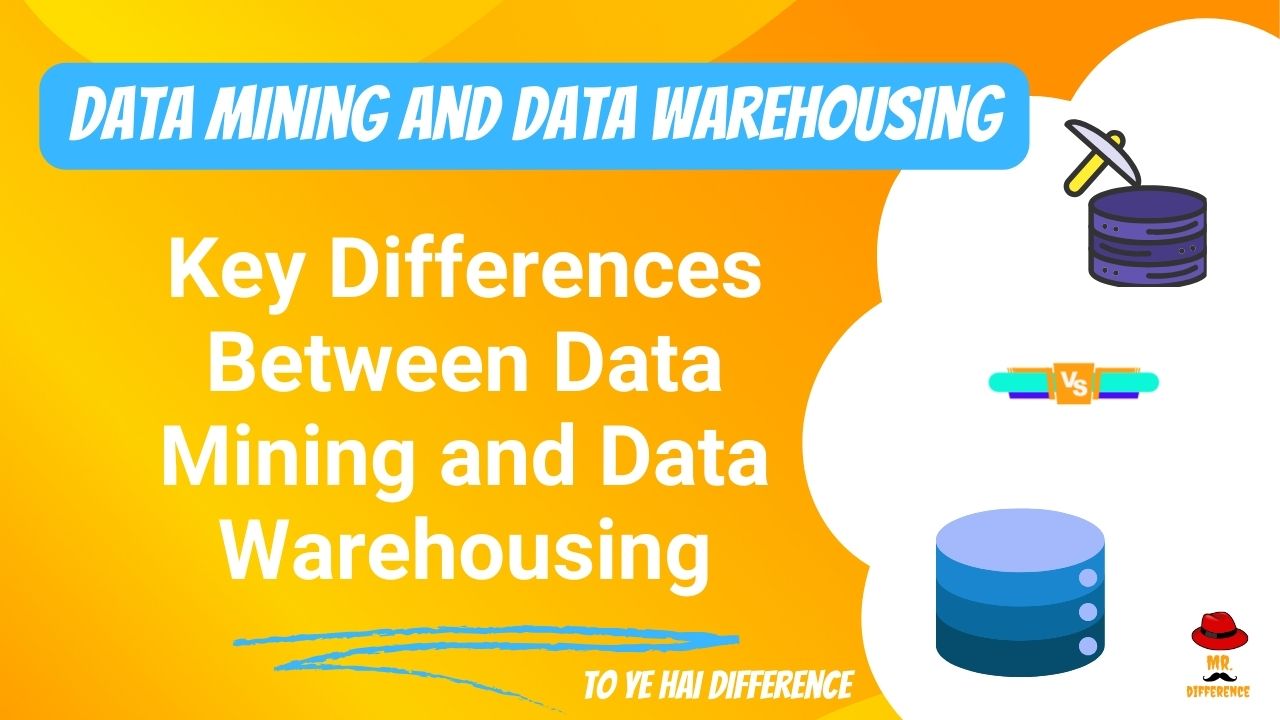In today’s data-driven world, organizations are constantly seeking ways to harness the power of data for better decision-making. Two key components in this process are data mining and data warehousing. While these terms are often used interchangeably, they serve distinct roles in the realm of data management and analysis.
Understanding the differences between data mining and data warehousing is crucial for businesses aiming to leverage their data effectively. In this article, we will delve deep into these concepts, compare their functionalities, and explore how they complement each other in the broader scope of business intelligence.
Introduction to Data Mining and Data Warehousing
What is Data Mining?
Data mining is the process of discovering patterns, trends, and relationships within large datasets using statistical and computational techniques. It involves analyzing data from different perspectives and summarizing it into useful information that can be used for various purposes, such as predicting future trends, identifying potential risks, or uncovering hidden opportunities. Data mining is often used in industries like finance, marketing, healthcare, and retail, where it helps in making informed decisions based on data-driven insights.
What is Data Warehousing?
Data warehousing, on the other hand, is the process of collecting, storing, and managing large volumes of data from various sources in a centralized repository. A data warehouse acts as a central hub where data is integrated, cleaned, and organized for easy access and analysis. Unlike traditional databases, which are designed for transactional processing, data warehouses are optimized for query and analysis, allowing businesses to retrieve and analyze historical data efficiently. Data warehousing is commonly used in business intelligence and reporting, where it enables organizations to make strategic decisions based on historical trends and patterns.
Why Understanding the Differences is Important
Although data mining and data warehousing are closely related, they serve different purposes within the data management ecosystem. Data warehousing focuses on the storage and organization of data, while data mining focuses on extracting valuable insights from that data. Understanding the differences between these two concepts is essential for businesses to choose the right tools and strategies for their data-driven initiatives.
Understanding Data Mining
How Data Mining Works
Data mining involves several steps, starting with data collection and preparation. The data is then processed to identify patterns and relationships using various algorithms and statistical techniques. The final step is to interpret the results and use them to make informed decisions.
The Process of Data Mining
- Data Collection: Gathering data from various sources such as databases, social media, and online transactions.
- Data Cleaning: Removing duplicates, errors, and irrelevant information to ensure data quality.
- Data Transformation: Converting data into a format suitable for analysis.
- Pattern Discovery: Using algorithms to identify patterns, trends, and relationships within the data.
- Interpretation: Analyzing the patterns to derive actionable insights.
Tools Used in Data Mining
Various tools are used in data mining, including:
- R and Python: Programming languages widely used for data analysis and mining.
- WEKA: A collection of machine learning algorithms for data mining tasks.
- SAS: A software suite for advanced analytics, multivariate analysis, and data mining.
Key Applications of Data Mining
Business Analytics
Data mining plays a crucial role in business analytics by helping companies identify customer preferences, predict sales trends, and optimize marketing campaigns. For example, retailers use data mining to analyze customer purchase history and recommend products based on previous buying patterns.
Fraud Detection
In the financial sector, data mining is used to detect fraudulent activities by analyzing transaction patterns. By identifying anomalies in transaction data, financial institutions can prevent fraud and protect their customers.
Market Analysis
Data mining helps businesses understand market trends and customer behavior, enabling them to develop targeted marketing strategies. For instance, e-commerce companies use data mining to analyze browsing history and tailor their product recommendations accordingly.
Understanding Data Warehousing
How Data Warehousing Works
A data warehouse is designed to store and manage large volumes of data from multiple sources. It provides a centralized repository where data is integrated, cleaned, and organized for easy access and analysis.
The Architecture of Data Warehousing
- Data Source Layer: The data warehouse collects data from various sources, such as transactional databases, external data feeds, and legacy systems.
- ETL Process: The Extract, Transform, Load (ETL) process extracts data from source systems, transforms it into a suitable format, and loads it into the data warehouse.
- Data Storage Layer: The data is stored in a central repository, typically organized into tables, schemas, and data marts.
- Presentation Layer: The data is made available to users through query tools, dashboards, and reports, allowing for analysis and decision-making.
Key Applications of Data Warehousing
Historical Data Analysis
Data warehousing enables businesses to store and analyze historical data, providing insights into long-term trends and patterns. For example, a company can use data warehousing to track sales performance over the years and identify seasonal trends.
Business Intelligence Reporting
Data warehousing supports business intelligence (BI) by providing a centralized repository for data analysis and reporting. BI tools can access data from the warehouse to generate reports, dashboards, and visualizations that help decision-makers gain insights into their operations.
Key Differences Between Data Mining and Data Warehousing
Purpose and Functionality
Data warehousing focuses on the storage and organization of data, providing a central repository for data from various sources. Its primary purpose is to support business intelligence and reporting by enabling users to retrieve and analyze historical data.
Data mining, on the other hand, focuses on analyzing data to uncover hidden patterns, trends, and relationships. It is used to generate insights that can be used for predictive analysis, decision-making, and risk management.
Process and Methodology
In data warehousing, the process involves the collection, cleaning, and integration of data from multiple sources into a central repository. The data is then organized into tables, schemas, and data marts, making it easy to access and analyze.
Data mining involves the analysis of data using algorithms and statistical techniques to identify patterns and trends. The process typically involves data collection, cleaning, transformation, and pattern discovery.
Tools and Technologies
Data warehousing tools include:
- Amazon Redshift: A fully managed data warehouse service in the cloud.
- Google BigQuery: A serverless, highly scalable data warehouse solution.
- Snowflake: A cloud data platform that provides data warehousing, data lakes, and data sharing capabilities.
Data mining tools include:
- RapidMiner: A data science platform for data preparation, machine learning, and predictive analytics.
- KNIME: An open-source analytics platform that enables data mining and machine learning.
Time Sensitivity
Data warehousing is primarily used for storing and analyzing historical data, allowing businesses to gain insights into past trends and patterns. It is not typically used for real-time analysis.
Data mining, on the other hand, can be used for both historical and real-time analysis. It allows businesses to analyze data in real-time and make decisions based on current trends and patterns.
How Data Mining and Data Warehousing Work Together
The Complementary Relationship
Data mining and data warehousing are complementary processes that work together to support business intelligence. Data warehousing provides the centralized repository where data is stored and managed, while data mining analyzes the data to uncover valuable insights.
Examples of Integrated Use in Business Intelligence
For example, a retailer might use a data warehouse to store sales data from multiple stores over several years. The data can then be mined to identify patterns and trends, such as which products are most popular during specific seasons or which promotions generate the most sales.
Advantages and Disadvantages of Data Mining
| Advantages of Data Mining | Disadvantages of Data Mining |
|---|---|
| Insights into Complex Data: Data mining helps businesses analyze large datasets to uncover hidden patterns and trends. | Privacy Concerns: Data mining can raise privacy issues, especially when analyzing personal or sensitive data. |
| Predictive Analysis: Data mining enables businesses to predict future trends and make data-driven decisions. | Data Quality Issues: The accuracy of data mining results depends on the quality of the data being analyzed. |
Advantages and Disadvantages of Data Warehousing
| Advantages of Data Warehousing | Disadvantages of Data Warehousing |
|---|---|
| Centralized Data Management: Data warehousing provides a centralized repository for storing and managing data from multiple sources. | High Implementation Costs: Implementing a data warehouse can be costly and time-consuming. |
| Enhanced Business Decision-Making: Data warehousing supports business intelligence and reporting, enabling businesses to make informed decisions based on historical data. | Complexity in Maintenance: Maintaining a data warehouse requires specialized skills and resources. |
Use Cases and Real-World Examples
Case Study: Data Mining in Retail
A major retail chain used data mining to analyze customer purchase history and identify trends in buying behavior. By understanding which products were frequently purchased together, the retailer was able to optimize product placement and increase sales.
Case Study: Data Warehousing in Healthcare
A healthcare provider implemented a data warehouse to store patient records, billing information, and clinical data. By integrating data from various sources, the provider was able to generate reports and dashboards that helped in tracking patient outcomes and improving care quality.
Frequently Asked Questions
What is the main difference between data mining and data warehousing?
The main difference lies in their purpose: data warehousing focuses on storing and organizing data from multiple sources, while data mining involves analyzing that data to uncover patterns, trends, and relationships.
Can data mining be done without a data warehouse?
Yes, data mining can be performed without a data warehouse, but having a data warehouse makes the process more efficient. A data warehouse provides a centralized and organized repository of data, which simplifies the data mining process.
Which industries benefit the most from data mining?
Industries such as finance, retail, healthcare, and marketing benefit significantly from data mining. These industries use data mining to predict trends, identify risks, and optimize operations.
Is data warehousing necessary for small businesses?
While data warehousing can be beneficial for small businesses, it may not be necessary for all. Small businesses with limited data may find it more practical to use simpler data management solutions. However, as the business grows, implementing a data warehouse can enhance decision-making and business intelligence capabilities.
What are the challenges in implementing data warehousing?
Challenges in implementing data warehousing include high costs, complexity in integration, data quality issues, and the need for specialized skills and resources for maintenance and operation.
Conclusion
In conclusion, data mining and data warehousing are two essential components of modern data management and analysis. While data warehousing focuses on storing and organizing data, data mining extracts valuable insights from that data. Together, they play a crucial role in supporting business intelligence and decision-making. Understanding the differences between data mining and data warehousing, as well as how they complement each other, is key to leveraging data effectively in today’s competitive business environment.
Are you ready to unlock the full potential of your data? Share your thoughts and experiences in the comments below!





Write a comment